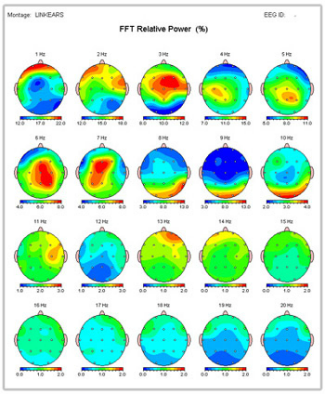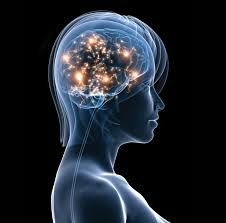QEEG Brain Map
 The Quantitative Electroencephalogram (qEEG) is a highly sensitive and sophisticated assessment tool used to evaluate a person’s brainwaves. Research has found that the qEEG has high reliability that is equal or superior to routinely used clinical tests such as MRI and CAT scans. The qEEG yields information related to the function of the brain, while the MRI yields information regarding brain structure.
The Quantitative Electroencephalogram (qEEG) is a highly sensitive and sophisticated assessment tool used to evaluate a person’s brainwaves. Research has found that the qEEG has high reliability that is equal or superior to routinely used clinical tests such as MRI and CAT scans. The qEEG yields information related to the function of the brain, while the MRI yields information regarding brain structure.
The Quantitative EEG, (qEEG) is sometimes referred to as brain mapping. The qEEG measures electrical patterns at the surface of the scalp. Accessed and analyzed through digital technology, these measurements primarily reflect cortical electrical activity or “brainwaves.” A multi-electrode recording
of brain wave activity is recorded and converted into numbers by a computer.
These numbers are then statistically analyzed and are converted into a color
map of brain functioning.
A patient's/client's performance can be statistically compared to that of a large population data base. Such comparisons allow the clinician to determine whether or not brain functioning is abnormal, to what degree, in what locations and in which frequency bands.
The QEEG provides a simple, tangible way to determine whether or not a client/patient will benefit from a psychotropic medication without the need for an extended trial. Recent research demonstrates that medication responsivity can be improved and side effects minimized through the use of QEEG techniques aimed at guiding the physician in choice of prescription.
 QEEGs can also serve as an effective tool for differentiating between organic and functional brain disorders. This functional data provides an excellent supplement to data obtained from CT scans and MRIs.. For instance, QEEG is a useful tool for differentiating between physiological and functional causes of depression and hyperactivity. It has also been helpful in the identification of schizophrenia and dementias. This procedure can also be employed to identify cases of cerebral atrophy associated with alcoholism or drug abuse as well as determining whether a child is presenting with neurologically based attention deficit disorder or one of psychogenic origin.
QEEGs can also serve as an effective tool for differentiating between organic and functional brain disorders. This functional data provides an excellent supplement to data obtained from CT scans and MRIs.. For instance, QEEG is a useful tool for differentiating between physiological and functional causes of depression and hyperactivity. It has also been helpful in the identification of schizophrenia and dementias. This procedure can also be employed to identify cases of cerebral atrophy associated with alcoholism or drug abuse as well as determining whether a child is presenting with neurologically based attention deficit disorder or one of psychogenic origin.
The procedure has the
advantage of being non-invasive safe and dynamic (temporal); quick - usually
requiring no more than an hour of preparation/administration and reliable. The colored dynamic brain map generated by a computer makes it easy for clients/patients to visualize the problems that are being explained. Thus it facilitates communication and improves the client's (and family's) understanding of their conditions.
The qEEG, or Brain Map, is invaluable if an individual is considering Brain Wave Training. In addition, it is highly recommended in difficult cases requiring a differential diagnosis.

Click on the file below to see a sample QEEG.
QEEG 1- Pre-Treatment sample
QEEG 2 - Post-Treatment sample

